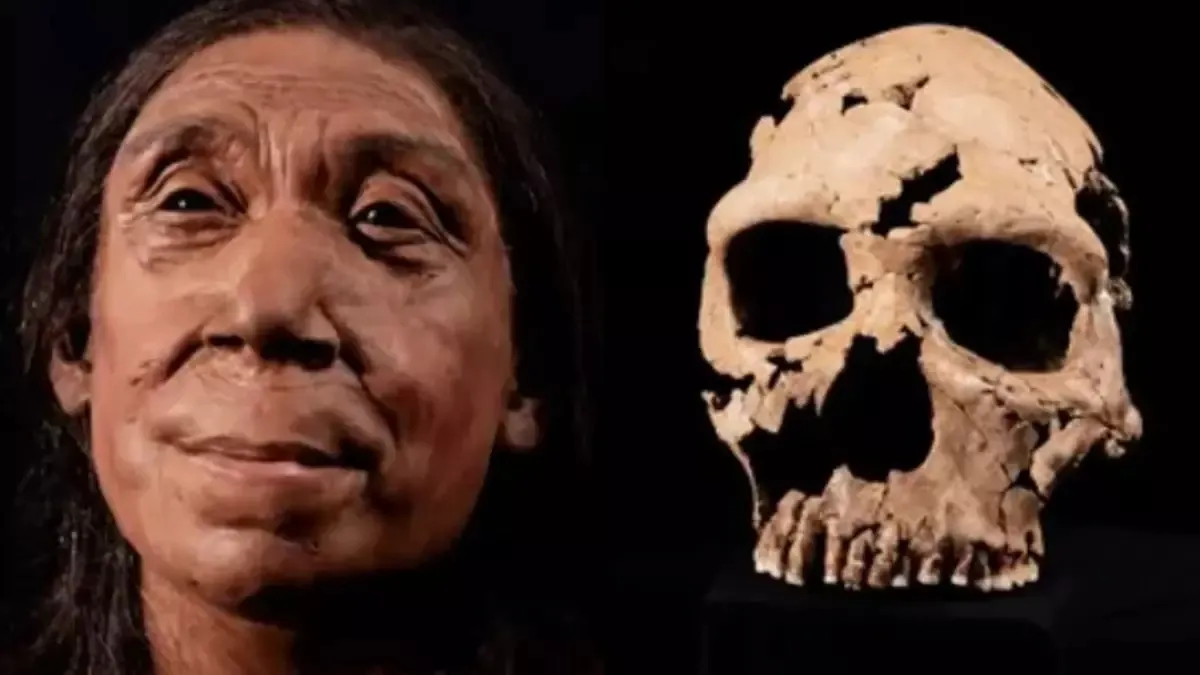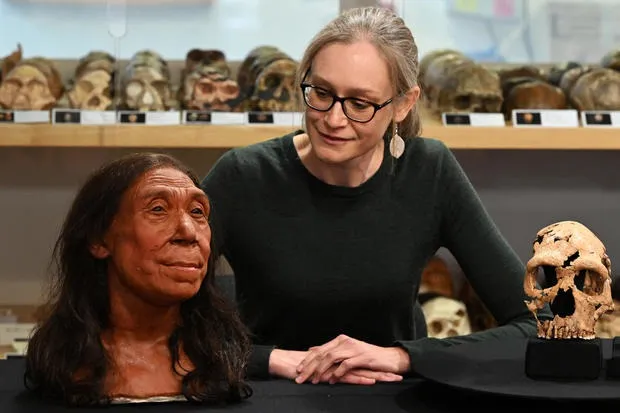Reconstruct a 75,000 years of Neanderthal woman skull, The skull was as flat as a pizza, basically
A team of British archaeologists has unveiled the reconstructed face of a 75,000-year-old Neanderthal woman, dubbed Shanidar Z, discovered in the Shanidar cave in the Kurdistan Region.

The groundbreaking discovery offers fresh insights into the lives of Neanderthals and challenges previous perceptions of their intelligence and behaviors.
Shanidar Z, named after the cave where her skull was unearthed in 2018, represents a significant find in the study of Neanderthals. Led by researchers from the University of Cambridge and Liverpool John Moores University, the excavation sheds light on ancient burial rituals and Neanderthal culture.

The discovery rekindles interest in the work of American archaeologist Ralph Solecki, who first unearthed Neanderthal remains in the same cave in the 1960s. Solecki’s findings, which included the remains of multiple Neanderthals and evidence of burial practices, suggested a level of sophistication previously unrecognized in these ancient hominids.
Despite political challenges delaying further exploration for decades, the recent excavation allowed researchers to delve deeper into Shanidar Z’s story. Her remarkably preserved skull, flattened to a thickness of 0.7 inches, offers unprecedented insights into Neanderthal anatomy and behavior.

Dr. Emma Pomeroy, a palaeo-anthropologist from the University of Cambridge, described the discovery as a privilege and emphasized its potential to deepen our understanding of Neanderthal life. “It’s extremely exciting and a massive privilege actually to be able to work with the remains of any individual but especially one as special as her,” she told BBC News.
The team’s return to the Zagros mountains in the Kurdistan Region underscores the significance of ongoing research in unlocking the mysteries of human evolution. “The skull was as flat as a pizza, basically,” said Professor Graeme Barker from Cambridge’s McDonald Institute for Archaeological Research, highlighting the remarkable preservation of Shanidar Z’s remains.
Neanderthals, who disappeared from the Earth around 40,000 years ago, continue to fascinate scientists and the public alike. Each new discovery, such as Shanidar Z’s reconstructed face, adds layers to our understanding of these ancient relatives and their place in the human story.
As archaeologists continue to analyze Shanidar Z’s remains and unearth new discoveries, their findings promise to reshape our understanding of Neanderthal life and their interactions with early humans.






